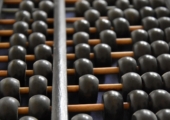March 27, 2015
The latest issue of the newsletter is now available to view online
 In this week’s issue; we glimpse the lives of Japanese workers who reject social norms and instead choose to live in Internet cafes; a new report explores how artificial light and the dark affect us in more ways than we might think; HSBC announces its plans to relocate a thousand employees from London to Birmingham; the civil service looks for better ways to meet the needs of disabled staff and overcome their current barriers to career progression; the Government reports on the state of its estate including a look at how it is introducing new ways of working to drive change; a new report lays out the challenges and opportunities of the much talked abut subject of workplace wellbeing; and Anna King offers some thoughts on this year’s MIPIM event. Sign up to the newsletter via the subscription form in the right hand sidebar and follow us on Twitter and join our LinkedIn Group to discuss these and other stories.
In this week’s issue; we glimpse the lives of Japanese workers who reject social norms and instead choose to live in Internet cafes; a new report explores how artificial light and the dark affect us in more ways than we might think; HSBC announces its plans to relocate a thousand employees from London to Birmingham; the civil service looks for better ways to meet the needs of disabled staff and overcome their current barriers to career progression; the Government reports on the state of its estate including a look at how it is introducing new ways of working to drive change; a new report lays out the challenges and opportunities of the much talked abut subject of workplace wellbeing; and Anna King offers some thoughts on this year’s MIPIM event. Sign up to the newsletter via the subscription form in the right hand sidebar and follow us on Twitter and join our LinkedIn Group to discuss these and other stories.





















March 17, 2015
How facilities management brings organisational values to life. Or not
by Alan Williams • Comment, Environment, Facilities management, Workplace
(more…)